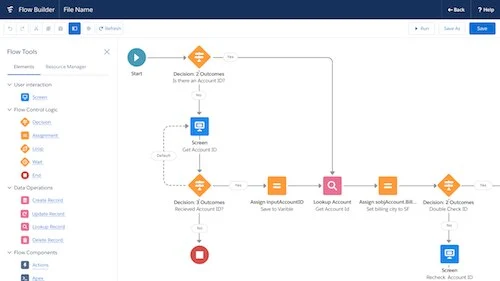In the world of cybersecurity, access control stands as a fundamental pillar. The regulation of access privileges is vital to uphold an organization’s security protocols. This article delves into the concept of privileged access management (PAM), outlining its significance, the responsibilities of privileged users, Managing Privileged Users for Security, and the risks associated with such access.
Understanding Privileged Access Management (PAM)
At the heart of cybersecurity strategies lies privileged access management (PAM). PAM encompasses a range of strategies and technologies employed by organizations to govern access and permissions for users, accounts, processes, and systems. The objective is to establish appropriate levels of privileged access to prevent and mitigate potential security breaches.
While external threats are often the primary focus, PAM also addresses internal vulnerabilities caused by accidents or negligence. A key principle in PAM is the “principle of least privilege,” where access is granted at the minimal level necessary for an individual to perform their designated tasks, minimizing potential risks.
Unveiling Privileged Users
Privileged users play a pivotal role in the implementation of access control. These individuals are entrusted with administrative privileges to modify systems and access highly confidential information. The following categories fall under privileged users:
- Operating and Network System Admins: These users possess administrative privileges over the operating system or network devices.
- Database Admins: Individuals with administrative privileges over one or multiple databases.
- Domain Admins: Users with elevated access across all workstations and servers within a domain.
- Application Admins: Individuals holding administrative privileges over specific applications.
- Local Admins: Users with administrative access to local systems, often IT personnel responsible for maintenance and setup.
Due to their unique access, privileged users hold the “keys to the kingdom.” They are both a crucial asset and a potential security vulnerability for organizations, making it imperative for them to understand their security responsibilities.
The Realm of Privileged Users
Privileged users wield varying degrees of access based on their roles. Their tasks may include:
- Software Installation: Installing software necessary for organizational functions.
- Process Management: Modifying or installing system processes.
- Configuration Control: Creating and modifying system configurations.
- Access Control Management: Governing user access controls.
- Remote Assistance: Viewing or controlling a user’s screen for remote assistance.
These responsibilities grant privileged users significant authority, enabling them to access and alter critical organizational data and network settings. Their greater access also entails a higher level of responsibility for safeguarding against potential security threats.
Navigating the Security Tightrope
The heightened access of privileged users is a double-edged sword. While they can act as security enforcers, they also carry the potential for severe security breaches. Even well-intentioned privileged users can inadvertently compromise security, as demonstrated by the susceptibility to simple phishing attacks.
For instance, if a system administrator or network engineer with elevated access falls victim to a malicious link, the resulting damage can be extensive. This underscores the importance of mitigating vulnerabilities tied to privileged access.
Mitigating Risks and Ensuring Security
To manage the risks posed by privileged users, organizations can adopt several strategies:
- Training and Awareness: Comprehensive training on security protocols and potential threats can empower privileged users to make informed decisions.
- Access Monitoring: Implementing robust monitoring systems can track privileged user activities, detecting any suspicious behavior promptly.
- Least Privilege Principle: Adhering to the principle of least privilege ensures that access is granted solely for essential tasks, minimizing potential damage.
- Multi-Factor Authentication (MFA): Enforcing MFA adds an extra layer of security, reducing the likelihood of unauthorized access.
- Regular Auditing: Conducting regular audits of privileged user activities helps identify and rectify security gaps.
Conclusion
In the realm of cybersecurity, managing privileged users is a critical aspect of safeguarding organizational assets. Privileged access management ensures that the “keys to the kingdom” are wielded responsibly and with a keen understanding of the associated security risks. By implementing robust strategies, organizations can strike a balance between granting access and maintaining the highest levels of security.




